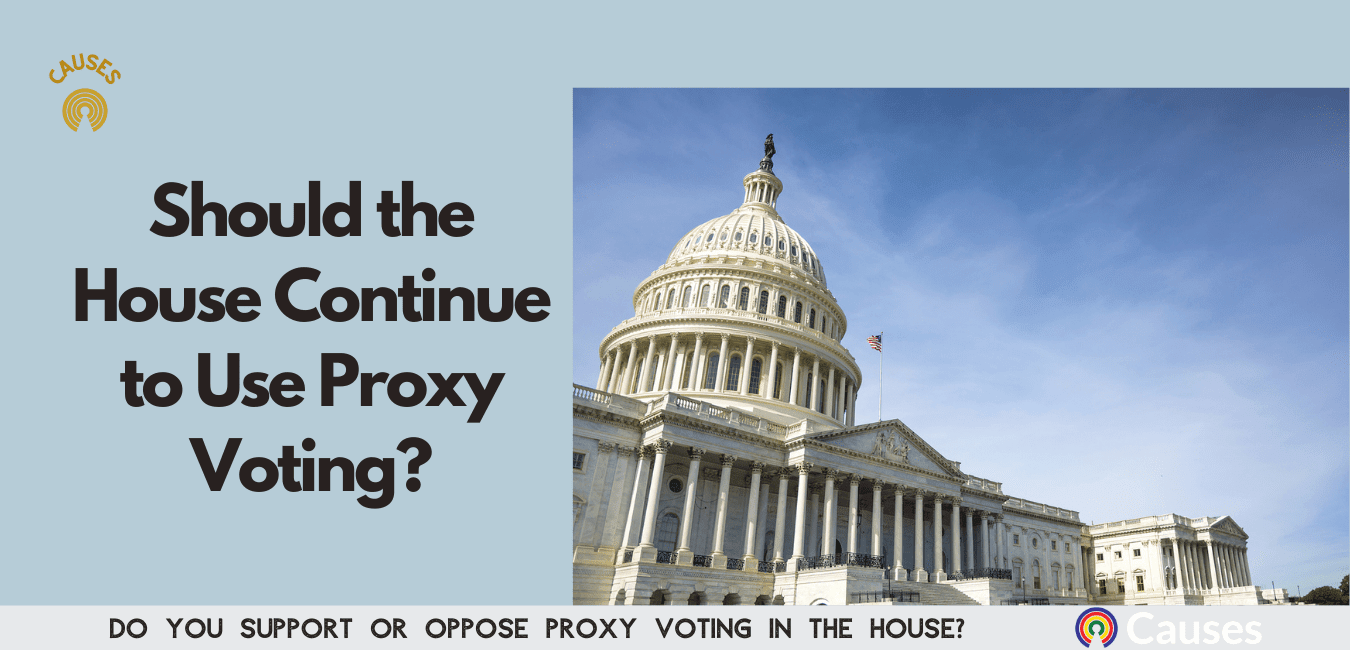
D.C. Circuit panel upholds proxy voting rules - should the House continue to use proxy voting?
Do you support or oppose the House continuing to use proxy voting?
By Eric Revell, Countable News
UPDATE 7/20/21
- A three-judge panel of the D.C. Circuit Court of Appeals released an opinion on Tuesday that rejected the Republican lawsuit challenging the constitutionality of proxy voting in the House.
- The panel held that the House's resolution pertained to "internal rules governing the casting of votes" by lawmakers in the chamber. Because the Constitution's Speech or Debate Clause protects the authority of the House and Senate to set their own rules and procedures, proxy voting is immune from judicial review.
The original article appears below.
What’s the story?
- The House of Representatives modified its rules last year amid the coronavirus (COVID-19) pandemic to allow lawmakers to cast floor votes remotely through a proxy as a means of making social distancing easier and allowing members who are in quarantine or otherwise unable to physically be at the Capitol to still cast a vote.
- But with the majority of members now vaccinated and the House easing other pandemic-related measures, such as ending members voting in socially distanced groups and shortening the voting window from 45 minutes to 20 minutes, some are calling for proxy voting to come to an end.
How does proxy voting work in the House?
- In May 2020, the House adopted a resolution establishing the proxy voting process on a temporary basis. House Speaker Nancy Pelosi (D-CA) subsequently extended the proxy voting authorization several times, most recently it was extended from July 3rd through August 17th.
- Under the rules, an absent member designates a present member as their proxy in a letter submitted to the House clerk. The proxy then reads the absent member’s vote aloud on the floor while a vote is ongoing, and the absent member’s vote is recorded on the roll.
- The names of lawmakers who cast their vote through a proxy are also noted in the Congressional Record. Individual members cannot serve as a proxy for any more than 10 of their colleagues.
Why has proxy voting been controversial?
- Historically, members had to be physically present in the House of Representatives for their vote to be tallied and for their participation to count towards the chamber’s quorum requirement.
- Most Republicans opposed proxy voting from the outset, arguing that if essential workers can do their jobs in person lawmakers can too. Minority Leader Kevin McCarthy (R-CA) filed a lawsuit challenging the constitutionality of the House’s proxy voting which was rejected by a federal district court. Supreme Court precedent holds that each chamber of Congress can set its own rules under the Constitution, so it's questionable whether the appeal will succeed.
- At the end of June 2021, Minority Whip Steve Scalise (R-LA) noted that several lawmakers hadn’t cast a vote in person except for the re-election of Pelosi as the speaker ― a vote which requires physical presence in the House chamber. He said in floor remarks that “there is a lot more cooperation, a lot more agreement you can reach when you’re here in person working together that you just can’t get on a Zoom or Webex call or just somebody standing at home proxy voting and not coming here to Washington.”
- While some of the members who have used proxy voting most frequently do so because of health issues, there are other lawmakers from both parties who have taken advantage of proxy voting to cast votes while they attend fundraisers or other political events in their districts or elsewhere.
- Eight GOP lawmakers who initially criticized proxy voting, including Rep. Madison Cawthorn (R-NC), later used it to vote while attending the Conservative Political Action Conference and joining a travel delegation to the Southern border.
- Democrats hold only a four-vote majority in the House and have made liberal use of proxy voting to ensure they have the votes needed to pass legislation. Seven voted by proxy the same day they joined President Joe Biden for an event in Michigan, and Rep. Ron Kind (D-WI) did so when the president visited Wisconsin.
(Photo Credit: iStock.com / rarrarorro)